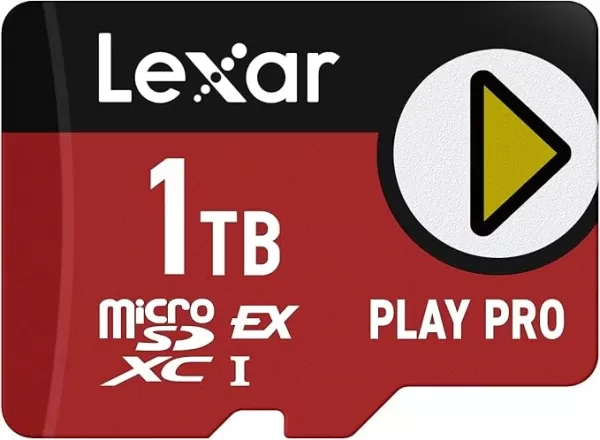Last week, Nintendo unveiled the Nintendo Switch 2, and with it came the announcement that the console exclusively supports expansion through MicroSD Express cards. This might be a hassle for those with existing collections of standard MicroSD cards, but it's a strategic move due to the superior speed of MicroSD Express.
The key advantage of MicroSD Express cards lies in their interface, which allows them to achieve read/write speeds comparable to the Universal Flash Storage (UFS) of the Switch 2's internal storage. This means, theoretically, games stored on these expansion cards should load just as quickly as those on the internal storage. The trade-off, however, is the inability to use less expensive, non-Express MicroSD cards.
MicroSD vs. MicroSD Express
Over the years, MicroSD cards have seen six different speed ratings evolve. Starting with the original 12.5MB/s, which seems sluggish by today's standards, speeds have advanced significantly. From SD High Speed at 25 MB/s to SD UHS III at 312MB/s, the progression has been notable. The introduction of the SD Express standard five years ago marked a significant leap in performance.
The critical difference with SD Express is its use of a PCIe 3.1 interface, as opposed to the slower UHS-I. PCIe is the same technology used in high-speed NVMe SSDs, unlocking much greater potential. Full-sized SD Express cards can achieve data transfer rates up to 3,940MB/s, far surpassing traditional SD cards.
While MicroSD Express cards don't reach the top speeds of their full-sized counterparts, they still boast impressive performance, with speeds up to 985MB/s—three times faster than the fastest non-Express MicroSD cards.
Why Does the Switch 2 Require MicroSD Express?
Nintendo's specific reasons for requiring MicroSD Express cards are not public, but the primary rationale appears to be speed. A game installed on a traditional UHS-I MicroSD card versus a MicroSD Express card will load much faster with the latter, thanks to the PCIe 3.1 interface. This requirement could set a trend for future handheld gaming PCs.
The internal storage of the Nintendo Switch 2 has been upgraded to UFS from eMMC, aligning with the need for faster external storage. Early demos suggest that games like Breath of the Wild load significantly faster, with fast travel times reduced by 35% (according to Polygon) and initial load times improved by a factor of three (Digital Foundry). These enhancements might be due to the faster internal storage or the improved CPU and GPU, which can process data more efficiently. The point is, Nintendo needs its external storage to match these speeds to prevent bottlenecks in future games that demand faster disk performance.
Moreover, requiring MicroSD Express cards positions the Switch 2 for future storage advancements. The current fastest standard, SD 8.0 Specification, allows full-size SD Express cards to reach speeds up to 3,942MB/s. While MicroSD Express cards are not yet at this level, future iterations could approach these speeds, provided the Nintendo Switch 2's hardware supports them.
MicroSD Express Capacity Options
MicroSD Express cards have been slow to gain traction, but with the Nintendo Switch 2's launch on the horizon, this is expected to change. Currently, options are limited. Lexar, for example, offers a single MicroSD Express card in 256GB, 512GB, and 1TB variants, with the 1TB model priced at $199.

SanDisk, on the other hand, has a MicroSD Express card available that tops out at 256GB, matching the internal storage capacity of the Switch 2. At the time of the Switch 2's launch, expect limited availability of MicroSD Express cards over 512GB. However, as companies like Samsung increase production, the market for these cards is likely to expand rapidly.















